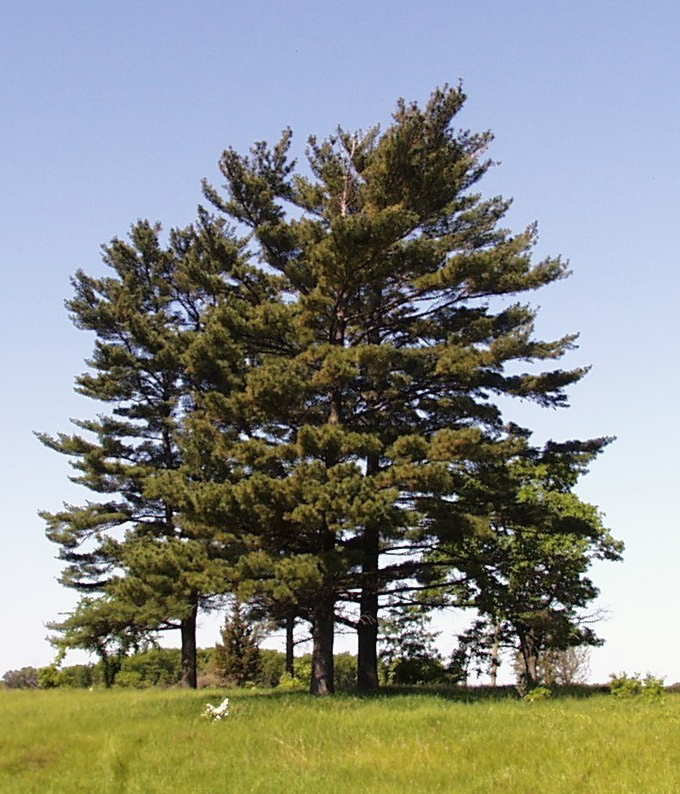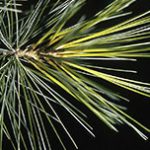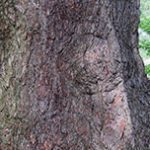Scientific Name: Pinus strobus

Eastern White Pine

The Needles

The Bark
Identification
-
Needles come in bunches of five
-
Needles are a distinctive blue-green color on top and whitish underneath
-
Bark on young trees: smooth, dark-green
-
Bark on mature trees: ridged, dark-brown bark
-
The trees often have white-tipped cones on them during the warmer months
- The trees have widely spaced branches
Status
- Native
Interesting Facts
- White pines are the largest conifer in the northeast
- White pines are often used for Christmas trees, and their wood is used for the toys that go underneath the trees
- Songbirds, porcupines and deer love to eat white pine seeds
- White pines grow best in partial shade, in a moderate, humid climate
References
Dickerson, J. (2002, February 5). Plant Fact Sheet. Retrieved from plants.usda.gov: https://plants.usda.gov/factsheet/pdf/fs_pist.pdf
Morton Arboretum. (2017). Eastern white pine. Retrieved from mortonarb.org: http://www.mortonarb.org/trees-plants/tree-plant-descriptions/eastern-white-pine
Ostermiller, S. (1997, July). White Pine. Retrieved from ostermiller.org: http://ostermiller.org/tree/whitepine.html
Smith, G. W. (2000). Eastern White Pine. Retrieved from fs.fed.us: https://www.na.fs.fed.us/spfo/pubs/silvics_manual/Volume_1/pinus/strobus.htm
Image Credits
Eastern White Pine: "Pinus strobus" by US Fish and Wildlife Service, Public Domain
The Needles: "Pinus strobus L." by Robert H. Mohlenbrock, hosted by the USDA-NRCS PLANTS Database / USDA NRCS. 1995. Northeast wetland flora: Field office guide to plant species. Northeast National Technical Center, Chester, is not copyrighted. Image cropped.
The Bark: "Ross Conifer Arboretum, trunk of Pinus strobus Eastern White Pine" by K M is licensed under CC BY 2.0. Image cropped.